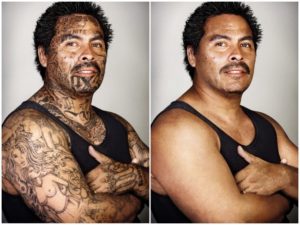Have you ever considered what rules control California’s 120,000 inmates’ daily lives? Is there a book that specifies what conduct is or is not permitted? Meet the California Department of Corrections and Rehabilitation’s (CDCR’s) Department Operations Manual— the DOM. The 849-page DOM provides an extensive overview of the institutional infrastructure of the CDCR.… Read the rest
considered what rules control California’s 120,000 inmates’ daily lives? Is there a book that specifies what conduct is or is not permitted? Meet the California Department of Corrections and Rehabilitation’s (CDCR’s) Department Operations Manual— the DOM. The 849-page DOM provides an extensive overview of the institutional infrastructure of the CDCR.… Read the rest
 In prison, books are friends. They’re virtual tickets out of the prison yard and into worlds of escape. Science tells us that reading benefits our brain function and emotions.
In prison, books are friends. They’re virtual tickets out of the prison yard and into worlds of escape. Science tells us that reading benefits our brain function and emotions.
Prison administrators should understand science-based findings that reading is good for people. In her article “8 Science-Backed Reasons to Read a (Real) Book,” Abigail Wise gives four reasons that are particularly relevant to inmate readers:
- It [reading] increases intelligence
- It can boost your brain power
- Reading can make you more empathic
- Reading can help you relax
In my blog, Prison Is a Good Place to Catch Up on Your Reading, I argue that the boredom inherent in doing time and the resultant numbing of the mind caused by the never-changing, predictable daily routine of life has an antidote in the reading of books.… Read the rest
 Cell phones in prison inmates’ hands are a problem. During my term at Ironwood State Prison (2003–2005), inmates did not have cell phones, and I never imagined cell phones’ being used by inmates. Outgoing phone calls were allowed only on prison phones, after evening chow, and only after the inmate had signed up to make a call at a specific time.… Read the rest
Cell phones in prison inmates’ hands are a problem. During my term at Ironwood State Prison (2003–2005), inmates did not have cell phones, and I never imagined cell phones’ being used by inmates. Outgoing phone calls were allowed only on prison phones, after evening chow, and only after the inmate had signed up to make a call at a specific time.… Read the rest
 AB 1008 Becomes Law in California
AB 1008 Becomes Law in California
Assembly Bill (AB) 1008 is California’s extended Ban-the-Box law. It is an antidiscrimination employment law. I discussed the bill in Ban the Box and called for its enactment into law. The law is well intended but flawed. The reasoning behind Ban the Box is not complicated; it forces the removal of this question from job applications: “Have you ever been convicted of a felony?”… Read the rest
 I wonder what the big prison reform issue is going to be in 2018. As I see it, there are three categories of reform issues to watch: preincarceration (bail and sentencing), incarceration (overcrowding and rehabilitation), and postincarceration (reentry and employment). This post focuses on incarceration—more specifically, the retention of inmates in private prisons.… Read the rest
I wonder what the big prison reform issue is going to be in 2018. As I see it, there are three categories of reform issues to watch: preincarceration (bail and sentencing), incarceration (overcrowding and rehabilitation), and postincarceration (reentry and employment). This post focuses on incarceration—more specifically, the retention of inmates in private prisons.… Read the rest
 As I review my 2017 posts, I cannot help but notice that my subject matter is influenced by current events filtered through the lens of prison reform issues. Reform affects all socioeconomic classes, both genders, most ages, and all races. This reality makes prison reform a far-reaching governmental arch over human conduct.… Read the rest
As I review my 2017 posts, I cannot help but notice that my subject matter is influenced by current events filtered through the lens of prison reform issues. Reform affects all socioeconomic classes, both genders, most ages, and all races. This reality makes prison reform a far-reaching governmental arch over human conduct.… Read the rest
 I’m often asked what prison is like. That broad question can be approached in many ways, and I rephrase it in my mind as: “What does prison feel like?”
I’m often asked what prison is like. That broad question can be approached in many ways, and I rephrase it in my mind as: “What does prison feel like?”
When feelings are part of a conversation, solid connections are made. To communicate at this level, identifying a life experience equivalency with whom I’m talking helps.… Read the rest
 Some laws are oppressive to low-income people facing criminal prosecution. An example is California Penal Code section 1203.016. This law, effective since January 1, 2015, enables California’s fifty-eight counties to deliver poor people to corporations that then profit from the human misery of these people, men and women who are charged with crimes and stuck in jail.… Read the rest
Some laws are oppressive to low-income people facing criminal prosecution. An example is California Penal Code section 1203.016. This law, effective since January 1, 2015, enables California’s fifty-eight counties to deliver poor people to corporations that then profit from the human misery of these people, men and women who are charged with crimes and stuck in jail.… Read the rest
 Skin Deep: Looking Beyond the Tattoos is a book you absorb through your eyes and into your heart. This 176-page coffee table book is a thoughtful catalog of stunning photographs of formerly incarcerated people and their self-disclosures about their tattoos. Twenty-seven people are presented in two striking visuals: heavily tattooed and digitally retouched without their prison ink.… Read the rest
Skin Deep: Looking Beyond the Tattoos is a book you absorb through your eyes and into your heart. This 176-page coffee table book is a thoughtful catalog of stunning photographs of formerly incarcerated people and their self-disclosures about their tattoos. Twenty-seven people are presented in two striking visuals: heavily tattooed and digitally retouched without their prison ink.… Read the rest
 I remember meeting my first state-raised inmate. It was on the yard, walking the track at Ironwood State Prison in Blythe, California. State-raised refers to a person who has spent more time incarcerated than not.
I remember meeting my first state-raised inmate. It was on the yard, walking the track at Ironwood State Prison in Blythe, California. State-raised refers to a person who has spent more time incarcerated than not.
Anthony was twenty-six years old, small in stature, socially awkward, and eager for recognition. He joined me walking the track one day—walking the track was a good time to talk in relative privacy—and he seized the opportunity.… Read the rest
Follow Us!